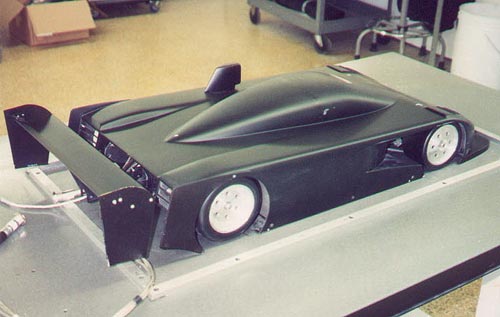Cold Fussion wrote:For a road car heating the tyres is not important
Yes it is important.
Even a bit driving at low speeds some 30mph can make a huge difference. Also when driving a car early in the morning, a car kept in a garage (even if unheated) vs in the driveway can make a huge difference.
For example dragster tire manufacturers recommend to heat the tires some 15 F above track temperature.
http://www.mickeythompsontires.com/tech.php?bulletin=s1
By the way all the tire burnout drama to heat tires just 15 degrees?
The problem is that nobody's supposed to be drag racing between traffic lights at all, so it would be politically incorrect to advertise this increased performance by heated tires.
So this only leaves shorter distance braking and improved emergency maneuvers like the moose test
http://en.wikipedia.org/wiki/Moose_test
The good thing is that once engines have warmed up the radiator coolant is kept at the same temperature a bit above 100 Celsus REGARDLESS OF AMBIENT TEMPERATURE. So this can help keeping a much more constant tire temperature.
Air that passed thru a radiator can have a temperature around 60 Celsius so I honestly think that tires can consistently be radiator-heated to 40 Celsius.
For some extreme performance "street"/autocross tires serious grip begins at just 120 Fahrenheit (49 Celsius). Just above the 40 Celsius I mentioned.
"That said, they produced close to their maximum cornering power at temperatures as low as 120 F, so unlike some of the other tires in this category, the Rivals are actually quite flexible and usable in a wide range of temperatures"
The grip difference is enormous
"Having spent the summer beating on a set of 245/40ZR17s on our friend Vinh Pham’s lightly modded Scion FR-S, we’ve learned quite a lot about these sticky BFGs. For starters, on stock FR-S rubber we were seeing max cornering g-forces of about 1.0 to 1.05 g, while the Rivals bumped that up significantly to right around 1.3 g at our local test track. To put that into perspective, we generally see about 1.4 g with a DOT competition/track tire, so the Rival compound is clearly closer to that of a race tire than a street tire.
Lap times confirmed just how fast the Rivals are, knocking a full 3 seconds off our best lap time. That’s a massive improvement"
http://www.superstreetonline.com/how-to ... rce-rival/
So in my opinion even if they add more tread grooves to handle some wet weather, performance should remain this high as long as tire heating is provided.
I don't think any street tires can ever match these 1.3g when cold.
Specially true since the US Department of Transportation requires a minimum treadwear rating, if I'm not mistaken of 140. So tires can't be too soft.




